35+ Mistakes That Led to Archaeological Discoveries
03 Apr 2023Have you ever wondered how much archaeological work went into finding the objects we see when visiting a museum or ruins? And would you guess that most of these discoveries were made by accident? Numerous ordinary people as well as animals have changed the way we see history. Here are more than 35 of the most astonishing accidental archaeological finds.
The vaults of Edinburgh
In the 1980s, Norrie Rowan ran a tavern and was tasked with guarding a buddy who had fled the Romanian secret police for safety and security in the U.K.
The two ran into the Edinburgh vaults in Scotland while making their getaway. At the time, these tunnels beneath the ground had two uses. In addition to being a fascinating historical find, it also enabled Rowan to save the life of his friend.
 @tthrowawayyy2017/reddit.com
@tthrowawayyy2017/reddit.com
Pompeii
After Mount Vesuvius erupted in AD 79, the city of Pompeii was covered in ash. After then, this Roman city spends centuries disappearing into history.
Even with the ash-encased citizens of the city who failed to escape in time, the scene itself remained rather horrific. It also paints a picture of Pompeii's way of life, complete with bathhouses, taverns, amphitheaters, and other structures. Domenico Fontana, an architect, stumbled upon it by mistake in the late 16th century.

Greyballe Man
The Grauballe Man was unintentionally discovered by laborers who had just finished another day at the office, not by archaeologists.
These peat workers were working in a peat bog when they stumbled upon the mummified Grauballe Man, which was a startling discovery. This mummy, which dates to roughly the third century B.C., has incredible signs of preservation. He still had all of his hair and fingernails, which was amazing for a man of his age.
 @frede2702/reddit.com
@frede2702/reddit.com
Terracotta Army of Xian
In Xian, one of China's most well-known archaeological finds was made. This is the beautifully crafted and superbly preserved terracotta army.
This large army, which dates back more than 2,200 years, is fashioned entirely of terracotta. It is present because it is a component of Chinese Emperor Qin Shi Huangdi's mausoleum. When he was digging a well in 1974, a Chinese farmer made the discovery. He found this army of stone instead of digging a well.

Herculaneum
While Pompeii is frequently linked to the Mount Vesuvius eruption, it wasn't the only city to be devastated by the disaster.
Herculaneum, which was located just miles away from its more well-known twin city of Pompeii, was destroyed by the eruption of Mount Vesuvius hours after Pompeii. This was likewise an unintentional find when it was found, similar to Pompeii. In 1709, a farmer discovered the ancient city as he was excavating a well.
 @Prof_Augustus/reddit.com
@Prof_Augustus/reddit.com
The Lyceum of Aristotle in Athens
The philosopher Aristotle established the Lyceum, his own institution, in 335 B.C. The university and its relics were lost to time over time.
There was a planned quest for the Lyceum that may have lasted 100 years. It was actually found, but it was entirely by mistake. When building the Museum of Modern Art, a team accidentally discovered the long-lost university. Consequently, the location was changed into an outdoor museum.
 @midlifecrisisodyssey/reddit.com
@midlifecrisisodyssey/reddit.com
Venus de Milo
The Venus de Milo is a famous sculpture in the present day. It is a statue of the Greek goddess Aphrodite that is currently kept on view in the Louvre.
However, it wasn't always widely known. This artistic accomplishment, in contrast to several others, wasn't discovered until 1820, when a man by the name of Georgios was plowing a field. While he was out working, he came into a cave and within was the Venus de Milo, which is now admired by art lovers all around the world.

The Antikythera Mechanism
The Antikythera Mechanism is a mysterious item. In reality, it took a lot of searching before it was unintentionally found.
The mechanism's main enigma is its very existence. It was discovered among the wreckage of a Greek cargo ship that sank centuries ago, and it is at least 2,000 years old. Some people believe it to be the oldest analog computer in the world or perhaps an astronomical calendar. It is thought that it is 1,000 years older than comparable tools.
 @MoesBAR/reddit.com
@MoesBAR/reddit.com
Serdica's ruins
Engineers working on the excavation of a new section of the Bulgarian metro system came across the ruins of Serdica.
Once upon a time, Constantine the Great, the first Christian emperor of the Roman Empire, lived in the city of Serdica. He stayed here for around a year while searching for a new capital. The ruins revealed a wide range of elements as well, from mosaics to sewage systems.
 @Salt_Sailor/reddit.com
@Salt_Sailor/reddit.com
The Iceman, Otzi
A significant archaeological find, Otzi the Iceman provides a window into life among Europeans in the Copper Age.
He also made a mistake in terms of his discoveries, though. The remains were discovered in 1991 by two German hikers in the Tztal Alps near the Austrian-Italian border. Although it might have been a startling or even horrifying fact for those tourists, it has improved our knowledge of human history and evolution.

Israeli Heritage
An 11-year-old girl stumbled upon a unique silver coin dating back to the first century. This coin is believed to have been crafted by a priest who aligned with the Jewish rebels opposing the Romans. This historical connection makes it a rare artifact originating directly from the Temple and its turbulent times. Composed entirely of pure silver, the coin possesses a weight of 14 grams. Its obverse side showcases a cup alongside the inscriptions "Israeli shekel" and "second year," signifying the coin's association with the second year of the revolt (67-68 CE).
 @Hannibal-/reddit.com
@Hannibal-/reddit.com
Underground City of Derinkuyu
Even if there are many accidental archaeological finds, it must have been particularly shocking to find one in your own house.
A weird wall was discovered in a room behind the home a man resided in 1963. As a result, the Derinkuyu underground city was discovered during excavations. It's a vast network of tunnels that could accommodate about 2,000 people and was made public in Turkey in 1969.

Historical American Skeleton
A crew of divers discovered an underwater cave in 2007 while exploring the Yucatan Peninsula. They found a set of human skeletal remains inside the cave.
Researchers were able to estimate the age of the human remains at around 13,000 years old using carbon dating and the tooth enamel of the skeleton. The finding of remains is now regarded as the oldest and most complete skeletal remains discovered in the Western Hemisphere.
 @FritzFreddy/reddit.com
@FritzFreddy/reddit.com
Boat From the Sea of Galilee
The Bible makes multiple references to the Sea of Galilee. Theologians consider it to be one of the most crucial locations in the text because of how vital its presence is.
Inadvertently, a boat resembling those used by Jesus in the Bible was found in 1986. The boat was discovered by two fisherman after unusual weather conditions made it visible. It is a significant discovery for theological historians because to its resemblance to accounts from the gospel.
 @Sea of Galilee Boat | Type of Boat Jesus Traveled On/International Fellow/YouTube.com
@Sea of Galilee Boat | Type of Boat Jesus Traveled On/International Fellow/YouTube.com
Affordable Hoard
Despite its name, the Cheapside Hoard is anything but. In 1912, while constructing a cellar, laborers accidentally discovered the collection.
The Cheapside Hoard contains a sizable jewelry collection with more than 500 pieces. They were created in the early years of the 17th century. It stands out as a truly spectacular combination of artifacts and is packed with Elizabethan and Jacobean diamonds.
 @[deleted]/reddit.com
@[deleted]/reddit.com
The Dead Sea Scrolls
When they're near a body of water, many individuals pass the time by skipping rocks. However, hardly everyone who engages in this hobby makes an archaeological find that has significant historical significance.
The Dead Sea Scrolls were found in 1947 in this manner. These records were discovered thanks to a boulder that a Bedouin shepherd dropped into a cave. Since then, they have undergone substantial research and are regarded as reliable sources for information on the beginnings of both the Hebrew Bible and of Christianity as a whole.

Woolly Mammoth
The woolly mammoth is now thought of in the same way as many other well-known archaeological finds. However, it wasn't for the reasons you might imagine.
A Michigan farmer called James Bristle really found the woolly mammoth while excavating drainage ditches. He struck something unexpectedly, which turned out to be the remnants of a woolly mammoth, right away. They were also well-preserved, with the majority of the head and tusks remaining.
 @[deleted]/reddit.com
@[deleted]/reddit.com
The Caves of Banwell
There are several caves in the Banwell Caves. Stalactite Cave and Bone Cave were two of the unintended archeological finds.
Initially found in 1757 by a group of miners, the Stalactite Cave. It was then abandoned for 50 years, in part because getting there was challenging. Later, while searching for a faster method to access the cave, they came across a second cave filled with animal bones, including those of a huge sloth.
 @Banwell Bone Caves 2015 Somerset [200 photos] Tour of grounds and folly/Nina Payne/YouTube.com
@Banwell Bone Caves 2015 Somerset [200 photos] Tour of grounds and folly/Nina Payne/YouTube.com
The Stone Spheres of Costa Rica
The United Fruit Company made this finding in the 1930s while employing employees on banana plantations.
The fact that the spheres got in the way of the company's bulldozers on that particular day led to their discovery. In fact, there were over 300 of these spheres in Costa Rica, so there were more than just a handful in the way. Researchers believe they were created as early as 600 B.C. since their discovery.
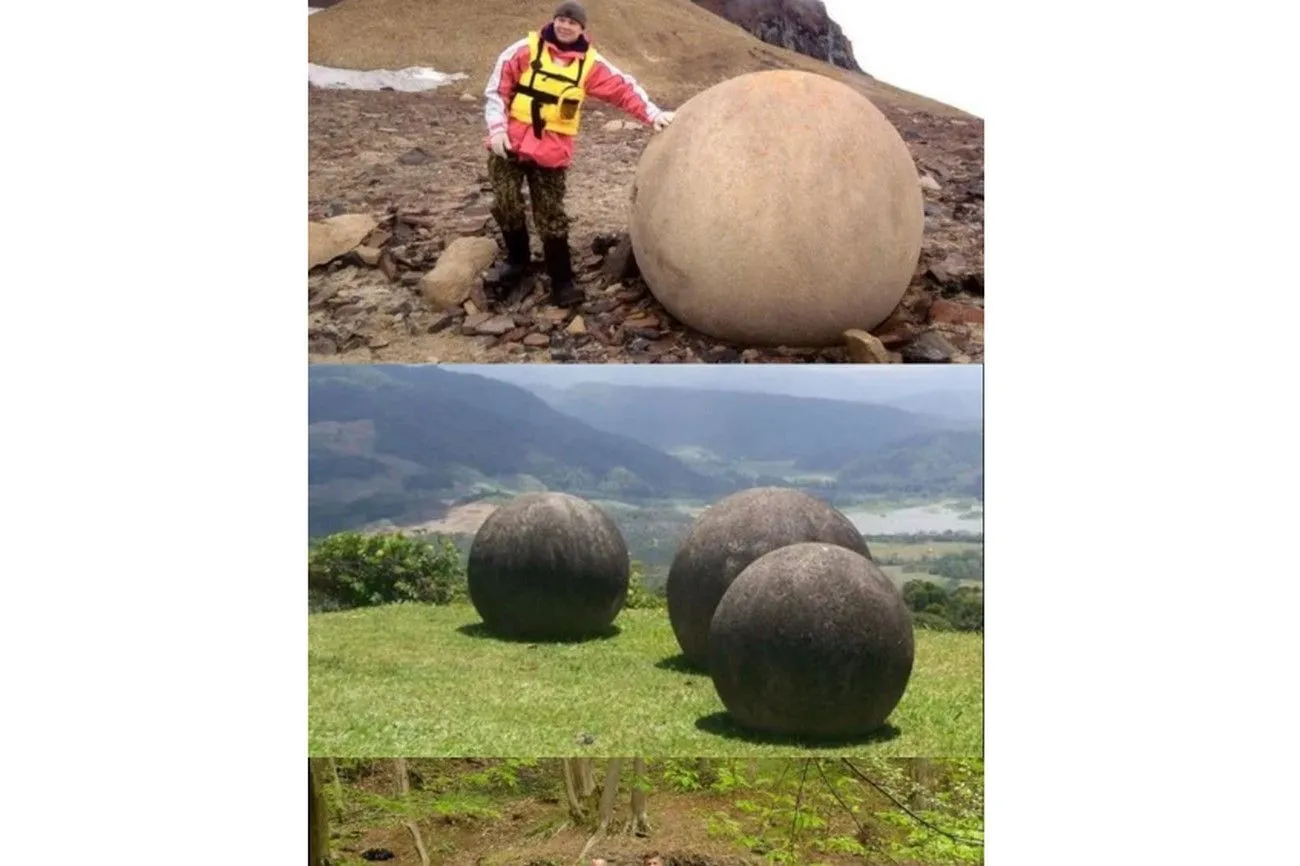 @DirkDieGurke/reddit.com
@DirkDieGurke/reddit.com
2000-Year-Old Butter
When Jack Conaway made a startling discovery, he was working as a turf cutter in the Emlagh bog. There was a 22-pound ball of butter 12 feet below earth.
According to estimates, the butter was produced roughly 2,000 years ago. Also discovered in a bog was a ball of butter that was about 5,000 years old when it was discovered, so this was not the first time butter had been located there. It's startling that the butter is theoretically also edible, despite the fact that eating it is not recommended.
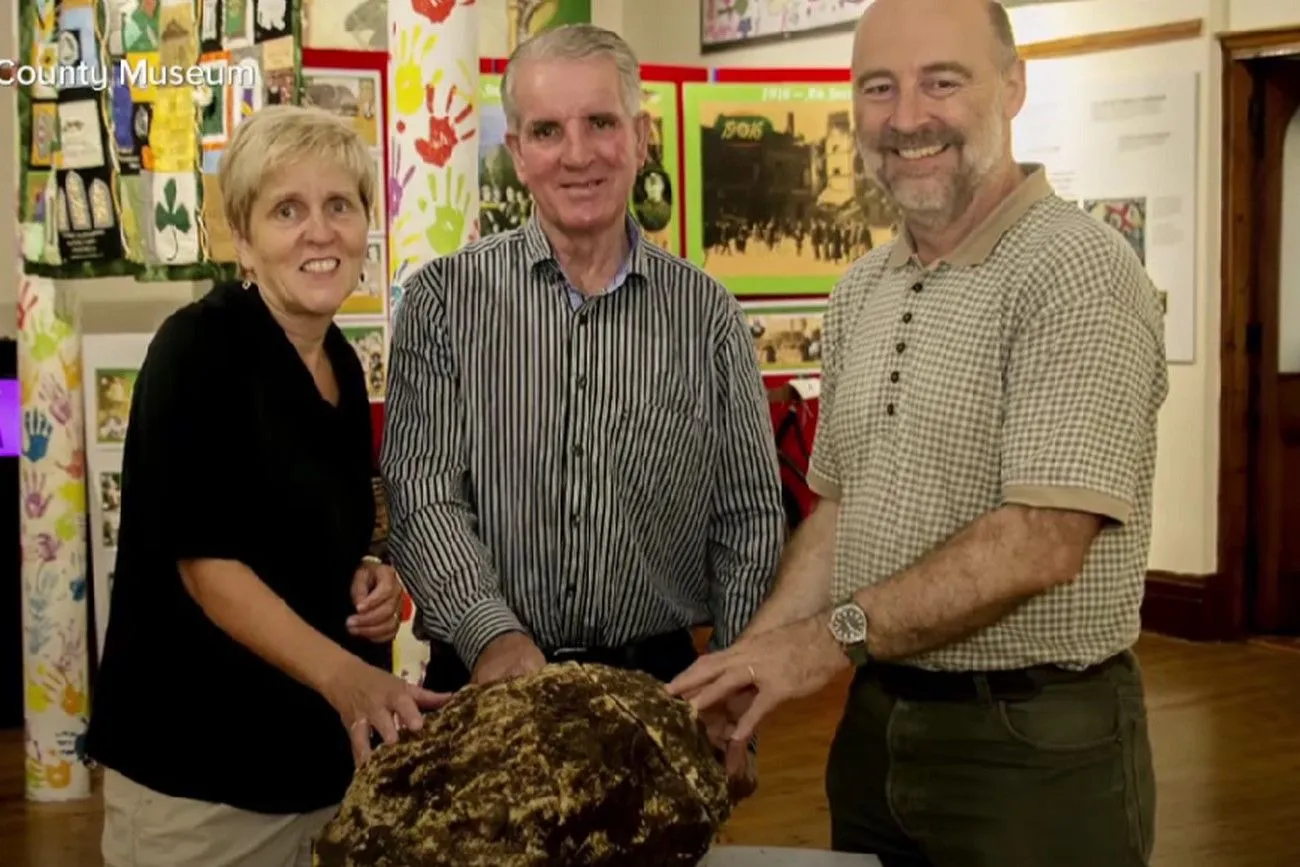 @2,000-year-old Butter Found in Ireland/ABC News/YouTube.com
@2,000-year-old Butter Found in Ireland/ABC News/YouTube.com
Rosetta Stone
The Rosetta Stone is one of the most significant historical discoveries. It is the key to understanding the hieroglyphs found in Egypt and date to 196 B.C.
It has even had an effect on culture and has been utilized as a key to opening up languages. Its finding, however, was by no means anticipated. It was discovered in 1799 by French soldiers who were enlarging an Egyptian fort. It's incredible to consider how long something so significant was overlooked.

Mayan Mural
Nothing is more unexpected than finding an archaeological site without ever leaving your home. Evidently, at least for Lucas Asicona Ramirez, having an old house has its advantages.
Attics, basements, and even hidden rooms or cellars have all been used as the site of numerous domestic archaeological finds. This time, Ramirez discovered a lost Mayan mural on the wall of his kitchen while performing some minor house renovations. It dates to the 18th century and implies that other households also have murals.
 @TarTarianPrincess/reddit.com
@TarTarianPrincess/reddit.com
A villa from the Roman era
Luke Irwin, a British rug maker, had no intention of unearthing any ancient artifacts. He only needed to use some buried cable instead.
This led to an excavation, however, it was initially not an archaeological one. This in turn resulted in the discovery of a long-lost Roman villa that had previously all been buried underneath. Because of this, archaeologists think that the finding may shed light on what life was like under Roman authority in Britain.
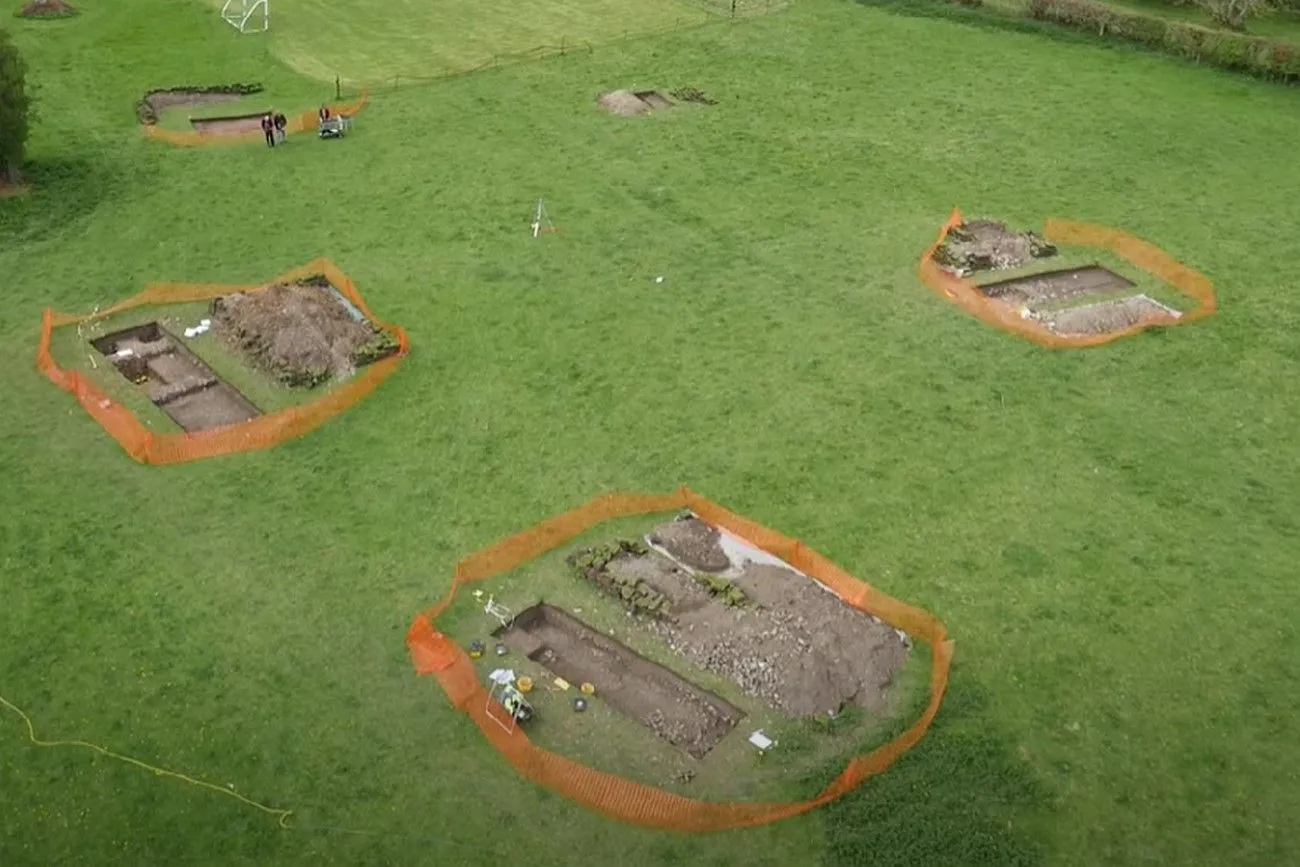 @Luke Irwin and the Tale of The Deverill Villa/Luke Irwin Rugs/YouTube.com
@Luke Irwin and the Tale of The Deverill Villa/Luke Irwin Rugs/YouTube.com
Machu Picchu
Hiram Bingham, an American historian, was intrigued by Machu Picchu, which was once a center of the Inca civilization. Bingham, a fellow explorer, went to Peru in 1911 to search for the lost Inca capital.
Amazingly, a modest villager named Melchor Arteaga gave him the location's directions. Even more amazing was the fact that Augustin Lizarraga's name and the year 1902 were carved on one of the walls there, indicating that someone else must have discovered it prior to him.

Chariot and Horse Pits
A significantly larger discovery than anticipated was made during a dig in the central Chinese city of Xinzheng. Pits for horses and chariots were also included in the burial pit.
According to popular belief, a noble family that lived between 806 and 375 B.C. during the Zheng kingdom is buried in the burial hole. They discovered approximately 100 horse bones inside the burial pit together with a 2.4-meter-long, 1.7-meter-wide chariot. Its age was put at around 2,400 years.
 @Catona/reddit.com
@Catona/reddit.com
Cave paintings from Lascaux
Since their discoveries, cave art has served as a window into the world of our ancestors. They aid in our understanding of the earliest humans.
Marcel Ravidat, who was then only 18 years old, stumbled into Lascaux's entrance. There are more than 600 paintings on the walls of this building in Montignac, France, many of them include bulls, horses, and other creatures from the Upper Paleolithic era. It's interesting that this archeological error only shows one human being.
 @The Dordogne, France: Lascaux's Prehistoric Cave Paintings - Rick Steves’ Europe Travel Guide/Rick Steves' Europe/YouTube.com
@The Dordogne, France: Lascaux's Prehistoric Cave Paintings - Rick Steves’ Europe Travel Guide/Rick Steves' Europe/YouTube.com
Roman Shipwreck
A group of divers had more of an experience than they anticipated off the coast of Grado, Italy. They found a fascinating period of history rather than merely a glimpse of marine life.
They discovered a shipwreck that turned out to be a 2,000-year-old Roman wreck just six miles off the coast. The ship measured a total of 16 feet in width and 55 feet in length, and it appeared to be a commerce vessel. Even a hydraulic system for a live aquarium was included.
 @Scientists Discovered The World's Oldest Intact Shipwreck: It's 2,400 Years Old | TIME/TIME/YouTube.com
@Scientists Discovered The World's Oldest Intact Shipwreck: It's 2,400 Years Old | TIME/TIME/YouTube.com
Corduroy Avenue
While many discoveries have been made about ancient history, more modern historical discoveries are also significant. This kind of discovery was found in Fairfax County, Virginia, in 2015.
The construction crew was excavating Ox Road to extend the sidewalk and shoulder when they stumbled onto an unexpected wooden highway. It was called Corduroy Road because of its ribbed look and was concealed beneath the asphalt. It is thought to have existed before the Civil War.
 @Corduroy Road/Fairfax Station Railroad Museum/YouTube.com
@Corduroy Road/Fairfax Station Railroad Museum/YouTube.com
Nazca Lines
A geoglyph is a pattern carved out of the earth using natural materials including clastic rocks, gravel, stone, and more. Nevertheless, they are difficult to see from the ground up due to their enormous size.
The Nazca desert in Peru was being flown over by a pilot in the 1930s when they became aware of something that seemed a little unusual. It turned out that they had found geoglyphs that had been left by native tribes between 100 B.C. and 650 A.D. Most likely, the geoglyphs were religious.
 @[deleted]/reddit.com
@[deleted]/reddit.com
Roman Coins in the U.K.
A metal detector may be a lot of fun to use when looking for missing items or even just intriguing tidbits. However, the majority of metal detector aficionados do not anticipate finding the next big thing.
Nick Davies experienced just that, though. He discovered a cache of 10,000 Roman coins at the age of 30 while using a metal detector in Shropshire, England. They had been buried in a clay pot and had just recently been found, in 2009.
 @Top 5 Treasures Treasure Hunters Find With Metal Detector/Treasure Hunting/Arkeolog/YouTube.com
@Top 5 Treasures Treasure Hunters Find With Metal Detector/Treasure Hunting/Arkeolog/YouTube.com
Gold and silver
A farmer in western Staffordshire, England, made a similar discovery to Nick Davies when he was working in his field.
His loot included a sizable quantity of gold and silver that was astonishingly old. Overall, he was able to find 1,500 pieces of gold and silver that were believed to have been hidden throughout the Dark Ages, which lasted from the 5th to the 15th century. Ironically, Davies made his discovery the same year as this.
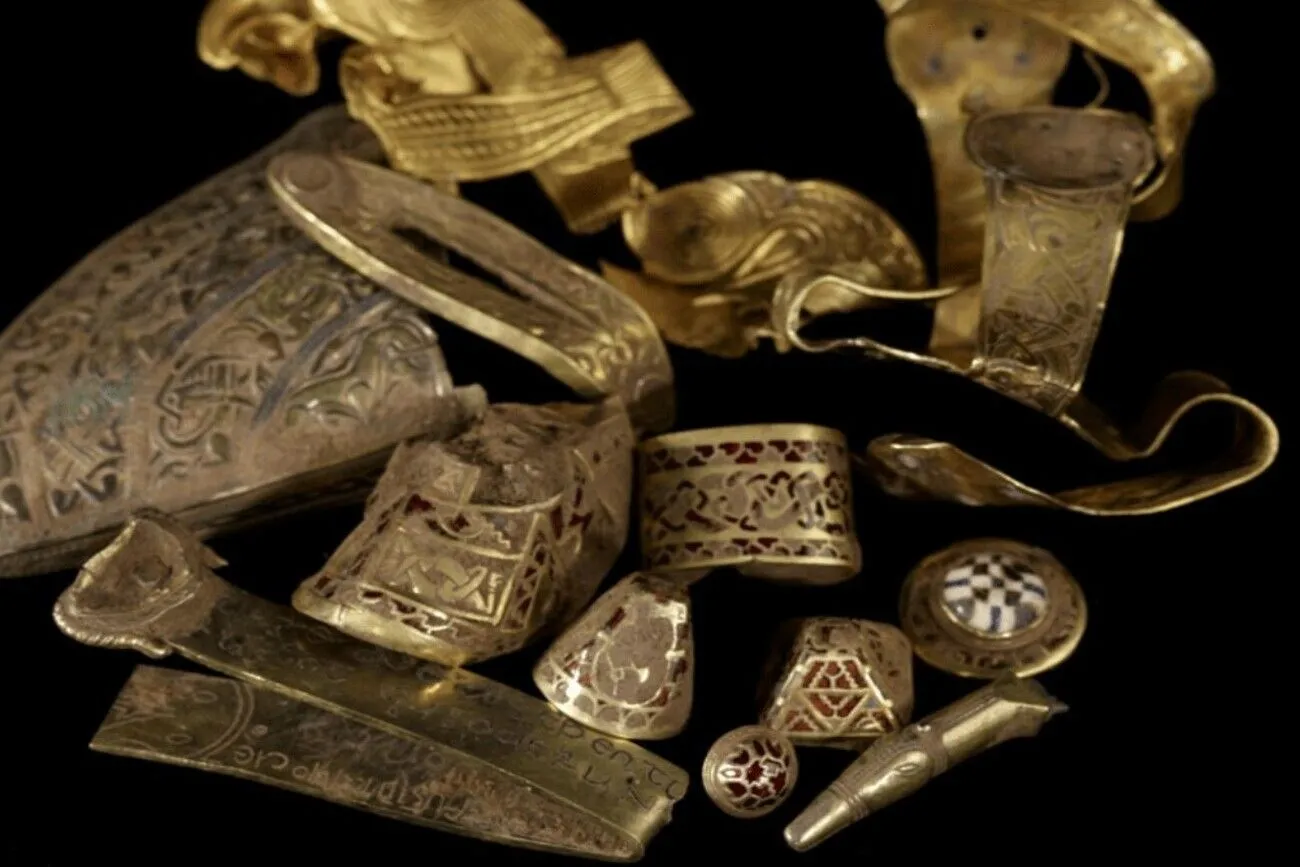 @This Man Uncovered A Treasure Trove Worth Millions – But Then He Deeply Regretted His Discovery/Wonderbot/YouTube.com
@This Man Uncovered A Treasure Trove Worth Millions – But Then He Deeply Regretted His Discovery/Wonderbot/YouTube.com
Floresienis homo
Although it is frequently referred to as the discovery of hobbits, it was actually the finding of humans during a time when there was a large height disparity, giving rise to the term Homo fluorescents.
Although they were primarily searching for signs of human migration from Asia to Australia, a team of archaeologists did discover this. Instead, in 2003, they discovered the skeletal remains of a woman who was just 3 1/2 feet tall. They also discovered stone tools and other animal bones in addition to the human.
 @Ainsley-Sorsby/reddit.com
@Ainsley-Sorsby/reddit.com
The Gobekli Tepe
Gobekli Tepe is without a doubt one of the most famous archeological finds of all time and the one location of ruins that will always be associated with ancient Turkish history. Amazingly, the site's earliest recordings weren't made until well over 50 years ago.
The site's lithics were identified and dated to the Aceramic Neolithic in 1963 by archeologist Peter Benedict, who mistook the stone slabs for burial markers. Klaus Schmidt revisited the location, excavated it, and discovered the T-shaped pillars some 30 years later.
 @AStolenSweetroll/reddit.com
@AStolenSweetroll/reddit.com
Findings from the Olduvai Gorge
Wilhelm Kattwinkel, a German physician, visited Olduvai Gorge to research sleeping sickness. He found the remains of a three-toed horse in this location. Geologist Hans Reck dispatched a team to the area shortly after, and they found human remains that date to 17,000 BP.
Later excavations were even more fruitful, yielding hand axes and other stone tools, demonstrating the significance of this site in the history of paleoanthropology.
 @[deleted]/reddit.com
@[deleted]/reddit.com
The Altamira Cave
The parietal cave art found in the Cave of Altamira in Spain, which exhibits a range of polychrome paintings said to have been created around 36,000 years ago, is what gives the location its significance.
In 1868, Modesto Cubillas was the one who found the location, but not without the assistance of his daughter, who was then 8 years old. Maria the child took her father to the location of the cave. After investigating the cave, Marcelino Sanz de Sautuola eventually came to the conclusion that it was Paleolithic in origin.
 @alikander99/reddit.com
@alikander99/reddit.com
Inscription of Jehoash
Even though it is largely regarded as an archaeological error, the Jehoash Inscription's discovery is full of intrigue and mystery, and everything from its provenance to its authenticity is up for debate.
In terms of what it is, the inscription mentions Jehoash and relates to renovations made to a temple in Jerusalem. However, there have been many debates over it, including legal disputes to establish its veracity. Carbon analysis has helped to validate the item today.
 @Fakes and Forgeries in the Archaeology of the Bible/Beneath the Bible/YouTube.com
@Fakes and Forgeries in the Archaeology of the Bible/Beneath the Bible/YouTube.com
Roman Coins by David Crisp
Another example of what a metal-detecting hobbyist could come across while spelunking is David Crisp, who was 63 years old when he made a priceless find.
When Crisp's equipment alerted him to anything underground, he was simply pleasantly exploring southwest England. A clay pot that was evidently fairly old was discovered after a little digging. It found revealed to contain 52,000 Roman coins. These coins were later valued at an estimated $1,000,000 in an appraisal.
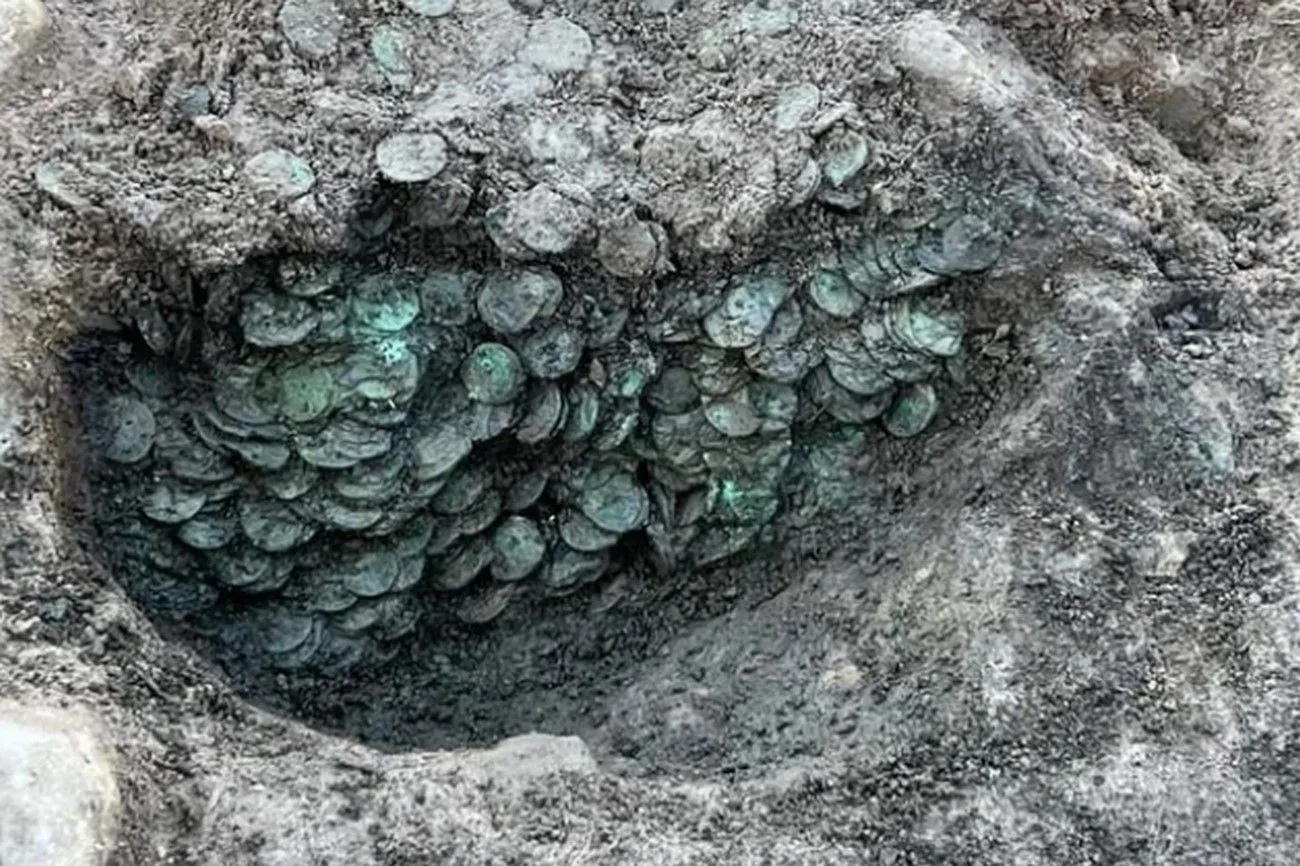 @mrnastymannn/reddit.com
@mrnastymannn/reddit.com
Ruins from the Paleoindian Era in Connecticut
Thanks to the Connecticut Department of Transportation, the State Historic Preservation Office in Connecticut made an amazing but unintentional discovery in January 2019.
They discovered someof the oldest human remains in southern New England while excavating a new bridge. They may have existed for 12,500 years, according to estimates. According to archaeologists, this discovery allowed them to research Paleoindian-era life in Connecticut.
 @Researchers find oldest Homo sapien remains yet/CBS Mornings/YouTube.com
@Researchers find oldest Homo sapien remains yet/CBS Mornings/YouTube.com
Madam of Mall
For forty years, Mary Ann Hall managed a brothel before history hid the proof. But purely by accident, the structure was unearthed in 1997.
It was discovered in 1997 while The Smithsonian Institute was surveying the Mall for the National Museum of the American Indian. It existed throughout the 19th century. Hall actually had a lot of success and amassed a little fortune through her initiatives. Even now, you can go to the Hall.
 @Mary Ann Hall/Videopedia/YouTube.com
@Mary Ann Hall/Videopedia/YouTube.com
Vikings without heads
The unintentional discovery of the headless Vikings is a different tale of a day on the job that was unanticipated for a group of road workers. 51 Vikings' remains were discovered in 2009 by a British crew of road workers.
It's interesting to note that every skeleton displayed evidence of decapitation. Further investigation into the matter leads to the possibility that the guys were decapitated as an execution for their misdeeds. It was a shocking moment for a squad that was merely performing its duties, despite being an important moment in history.
 @Sarfraz29/reddit.com
@Sarfraz29/reddit.com
The Ashurbanipal Library
The ancient tablets discovered in a palace in the ancient city of Nineveh comprise what is commonly referred to as the library of Ashurbanipal, however, it has never been established if all of them are related.
The name of this group of tablets is ascribed to the monarch who ruled between 668 and 627 BC, which is the period that the tablets are said to have originated. However, the South-West Palace, which was thought to belong to King Sennacherib, was the site of the first discovery.
 @The Fascinating Story behind the Library of Ashurbanipal at Nineveh (History of Ancient Assyria)/History with Cy/YouTube.com
@The Fascinating Story behind the Library of Ashurbanipal at Nineveh (History of Ancient Assyria)/History with Cy/YouTube.com
Iraqi statues of people
Accidentally, some life-size human statues were found in the area of what is now northern Iraq. According to Ph.D. student Dlshad Marf Zamua, “I didn't undertake excavation, simply archaeological soundings – the villagers unearthed these things unintentionally.”
A bronze figurine of a goat, column bases, and a few statues of bearded men were among the other finds made by the villagers. The majority of the findings are thought to date to the sixth or seventh century BC.
 @nimobo/reddit.com
@nimobo/reddit.com
The hairpin of Catherine de Medici
Although not the most significant archeological find on our list, it is nevertheless fascinating. It was discovered in a vintage restroom at Fontainebleau Palace, an ex-royal house west of Paris, in 2012.
Archaeologists hoped to just rehabilitate the historic site. They were shocked to discover a hairpin while searching behind a broken-down toilet. They later discovered that the hairpin had belonged to the 16th-century French queen Catherine de Medici.
 @Catherine de Medici’s Hair Pin from the 16th Century/History By Lynny/YouTube.com
@Catherine de Medici’s Hair Pin from the 16th Century/History By Lynny/YouTube.com
Recently found Mayan Ruins
Even while it's difficult to suggest that laser technology can accidentally uncover historic sites, this wasn't the discovery that these archaeologists had planned to make. Researchers made use of the revolutionary LiDAR technology, which can produce 3D maps by spotting light between surfaces and trees from above.
An astounding 60,000 palaces, homes, and elevated paths that were attributed to the Mayan civilization were discovered using technology in the jungles of northern Guatemala.
 @RamessesTheOK/reddit.com
@RamessesTheOK/reddit.com
14th Century Longsword
A medieval sword was recently discovered by an excavator in Poland, of all places while excavating on a peat bog. The longsword, which dates to the fourteenth century and is still in excellent condition, was discovered by Wojciech Kot.
It was given to the Fr. Stanislaw Staszic Museum after it was discovered. Given that the sword has been lying in the swamp for more than six centuries, the corrosion on it makes sense.
 @GaGator43/reddit.com
@GaGator43/reddit.com
Angkor Wat
The magnificent temple of Angkor Water, now one of the most popular tourist destinations in all of Asia, was once cloaked in secrecy and virtually invisible to the naked eye. The Cambodian site was recovered in 1860 by French naturalist Henri Mouhout after being lost for many years.
He said that one of these temples, which was built by an early Michelangelo and was a rival to Solomon's, "could take an honorable place beside our most beautiful buildings." "It is bigger than anything that Greece or Rome left for us."
 @Skafek1337/reddit.com
@Skafek1337/reddit.com
The Easter Island Moai
The Moai of Easter Island has been continuously inhabited for hundreds of years, but it wasn't until recently that archaeologists learned that the famous statues were actually buried beneath the ground they stood on.
It is evidence of the effort put into getting them across the island. On the Chilean Polynesian island, 887 statues have been discovered by researchers. They pay exquisite homage to the Rap Nui people who long lived on the island.
 @[deleted]/reddit.com
@[deleted]/reddit.com
The Tomb of Tutankhamun
The tomb of Tutankhamun, one of history's most well-known pharaohs, is unquestionably one of the most well-known archeological finds on our list. Theodora M. Davis, an attorney, discovered a few objects in 1907 that bore the Egyptian's name.
He started looking, but the tomb eluded him. But 15 years later, a fresh team of researchers happened to stumble upon the tomb. Of course, many people lost their lives while searching for it, which is frequently associated with the pharaoh's curse.
 @The Excavation of Tutankhamun’s Mummy | King Tut in Color/National Geographic/YouTube.com
@The Excavation of Tutankhamun’s Mummy | King Tut in Color/National Geographic/YouTube.com
The Mummy of China
Mummies aren't typically found during road construction, however, it seems that this can happen occasionally. The goal of this group of roadworkers in Taizhou's day was to enlarge a road.
But when a worker made a strange discovery while working on the 2011 project, something deeper was revealed. It was what would eventually be referred to as the Chinese mummy, and its age is thought to be greater than 600 years. Even centuries later, her eyebrows were still intact!
 @iklegemma/reddit.com
@iklegemma/reddit.com
The Finding of a Badger
One unintentional discovery was made by a badger rather than a human. He stayed in Germany's Stolpe for almost five years before departing in 2012.
He had found a pelvic bone during this time that most likely belonged to a 12th-century Slavic chieftain from the Middle Ages. Identical skeletons with bronze bowls at their feet and coins in their lips were also discovered. The tomb also included arrowheads, a belt buckle, and a three-foot-long double-edged blade.
